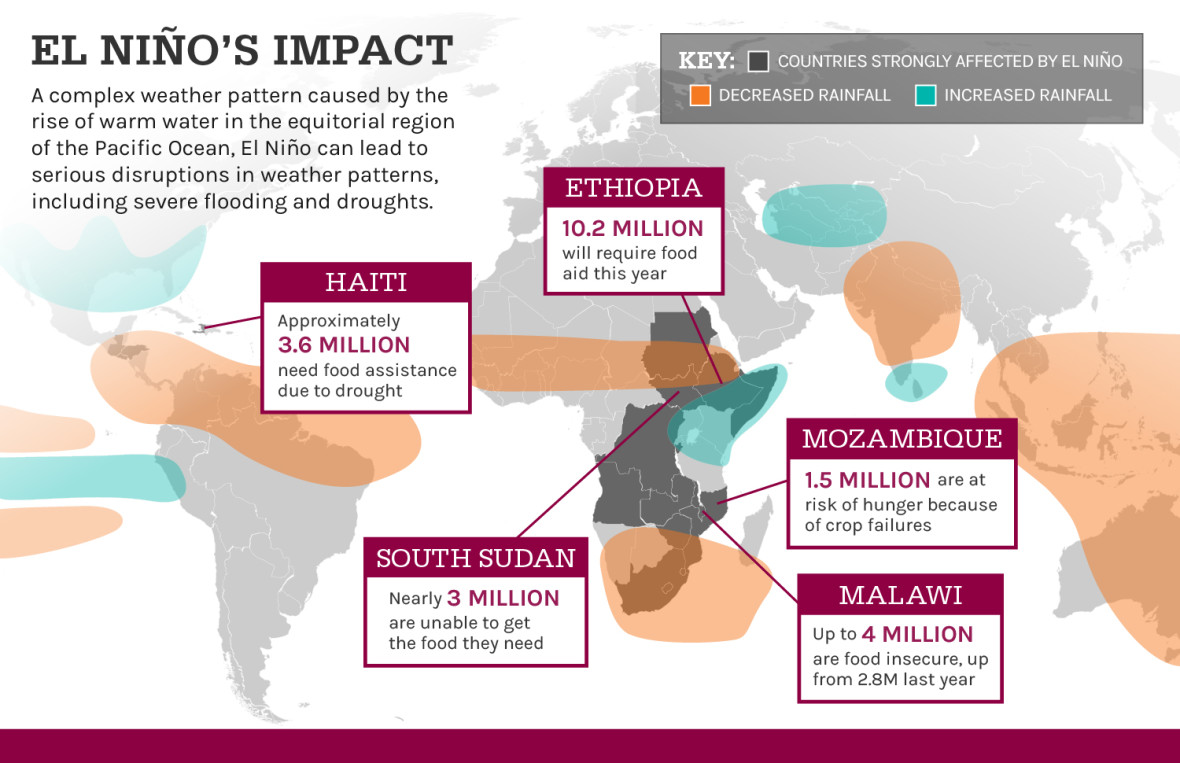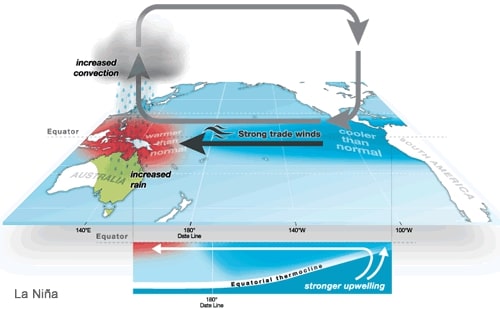We often hear the terms El Niño and La Niña thrown around in climate-related conversations, but what exactly do they refer to? This article will give a review of the cycle known as the El Niño Southern Oscillation.
—
Scientists have been crunching huge amounts of data with state-of-the-art machine learning algorithms to model the long-term fluctuations of the climate. However, well-understood, medium-term variations like El Niño and La Niña could help us predict imminent changes with higher precision.
The Difference Between El Niño And La Niña
First, El Niño means “the little boy” in Spanish, and La Niña, “the little girl”. They are opposite phases of the El Niño Southern Oscillation (ENSO), a temperature variation between the ocean and the atmosphere over the east-central Tropical Pacific. These phases usually occur once every few years and last 9 to 12 months, but can sometimes last years. Their frequency is quite irregular, and El Niño events happen more frequently than their counterpart.
The system can be broken down into three parts.
The Neutral Phase
When neither El Niño or La Niña are in action, low altitude trade winds blow east to west, from the American continent toward Oceania. These winds fly low and carry warm, moist air toward the western Pacific, thus warming its sea surface temperature (SST) and keeping the eastern waters cool.

Neutral phase of the ENSO cycle. Source: Australian Government Bureau of Meteorology (BOM).
Higher temperatures in the west lead to strong evaporation and storm activity, after which high altitude winds loop back toward the American continent. Here, the low temperatures cause the air to drop back down to lower altitudes and continue the cycle.
El Niño
During an El Niño event, the east to west trade winds die, keeping warmer than the normal air in the eastern and central parts of the tropical Pacific. Oceania experiences colder air and SST, while more stormy weather occurs around the Americas.

Schematic of an El Niño event. Source: Australian Government BOM.
Picture patterns of evaporation and rainfall as a single, giant aerial river. El Niño’s effect on rainfall over the Pacific thus has repercussions all around the world.

El Niño’s impact of rain patterns. Source: concernusa.org.
La Niña
La Niña is essentially the opposite of El Niño. Trade winds strengthen, reinforcing the neutral state described above. The eastern and central parts of the tropical Pacific become even colder, while the west is warmer and experiences more rainfall.

Schematic of a La Niña event. Source: Australian Government BOM.
Australia can experience much heavier downpours than usual, which enter further within the continent.
Impacts on Human Well-Being
As we saw earlier, the ENSO cycle can have far-reaching effects on our weather. Its greatest impact is on countries around the equator, including Central America and the Caribbean, Southeast Asia, Eastern and South-Eastern Africa especially. The 2015-2016 El Niño event was one of the 3 strongest episodes on record, affecting 60 million people worldwide.
How Does Climate Change Affect the ENSO Cycle?
It is difficult to say at this point in time. The ENSO is the result of a complicated interaction between the atmosphere and the ocean with many factors that are slowly being modified by climate change. It is notable that we have experienced more frequent “extreme” ENSO events in the last few decades, but our records only go back 150 years, which isn’t enough to draw any conclusions.
You might also like: A Brief History of CO2












![The Statistics of Biodiversity Loss [2020 WWF Report]](https://earth.org/wp-content/uploads/2020/12/lprwinkyTHB-544x306.jpg)





